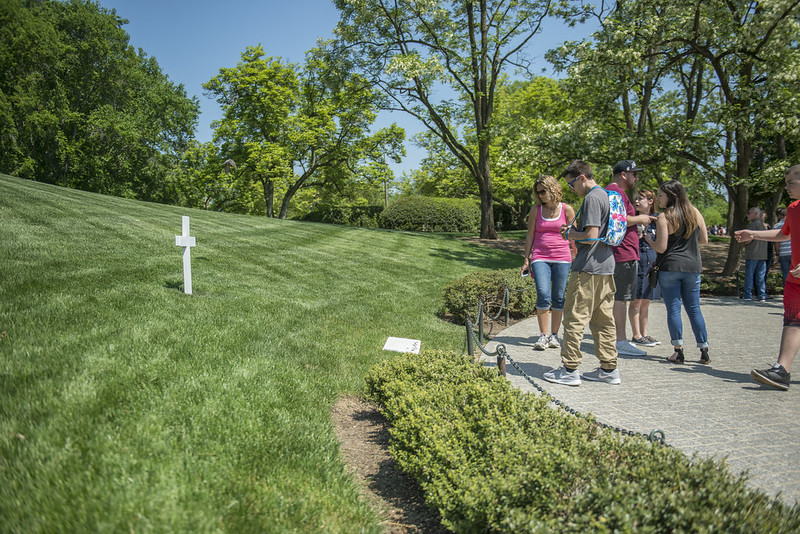Robert F. Kennedy Gravesite

Section 45
Robert F. Kennedy — President John F. Kennedy's younger brother, and a World War II U.S. Navy veteran who served as attorney general, senator and 1968 Democratic presidential candidate — was shot in Los Angeles on June 5, 1968, shortly after winning the California Democratic primary. He died the next morning.
After a funeral mass at St. Patrick's Cathedral in New York City on June 8, 1968, a train transported RFK's remains to Washington, D.C., to be buried next to the gravesite of his brother at Arlington National Cemetery. As the train stopped in cities along the route, thousands of Americans gathered to pay tribute to the slain leader. The long transport delayed the train's arrival into Union Station until 9:10 p.m., and cemetery officials quickly changed the funeral plans to accommodate an evening interment. Floodlights were placed around the open grave, and service members distributed 1,500 candles to the mourners.
Thirteen pallbearers carried the casket from the train, including astronaut John Glenn, former secretary of defense Robert S. McNamara, General Maxwell Taylor, Robert's eldest son Joe Kennedy and his brother Senator Edward Kennedy. A ceremonial motorcade stopped first at the Lincoln Memorial, where the U.S. Marine Corps Band played "The Battle Hymn of the Republic," and arrived at Arlington at 10:30 p.m. The brief graveside service was conducted by Terence Cardinal Cooke, Archbishop of New York. Afterward, John Glenn presented a folded flag to Ethel and Joe Kennedy on behalf of the United States.
In 1971, a more elaborate gravesite was completed at the request of the Kennedy family. Architect I.M. Pei (who also designed the East Building of the National Gallery of Art) designed the new gravesite, which retained the simple, white Christian cross of the original and added a granite plaza, like that of JFK's adjoining gravesite. Its two inscriptions quote two of Senator Kennedy's most notable addresses:
– "It is from numberless diverse acts of courage and belief that human history is shaped. Each time a man stands up for an ideal, or acts to improve the lot of others, or strikes out against injustice, he sends forth a tiny ripple of hope, and crossing each other from a million different centers of energy and daring those ripples build a current that can sweep down the mightiest wall of oppression and resistance." – Robert F. Kennedy, South Africa, June 6, 1966.
– "Some men see things as they are and ask 'Why?' I dream things that never were and ask, 'Why not?''' – Robert F. Kennedy, quoting playwright George Bernard Shaw in his 1968 presidential campaign.
► More about Robert F. Kennedy, from the John F. Kennedy Presidential Library and Museum.